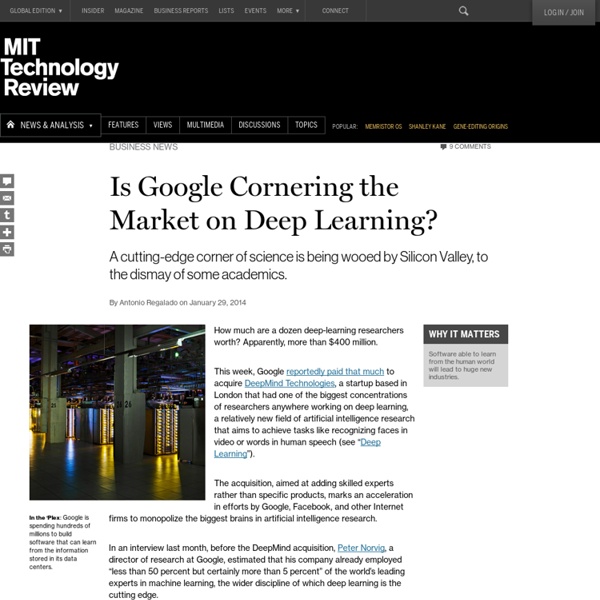octopus challenes our understanding of consciousness itself
Inside the mind of the octopus by Sy Montgomery Photograph: Brandon Cole ON AN UNSEASONABLY WARM day in the middle of March, I traveled from New Hampshire to the moist, dim sanctuary of the New England Aquarium, hoping to touch an alternate reality. For me, it was a momentous occasion. Many times I have stood mesmerized by an aquarium tank, wondering, as I stared into the horizontal pupils of an octopus’s large, prominent eyes, if she was staring back at me—and if so, what was she thinking? Not long ago, a question like this would have seemed foolish, if not crazy. Only recently have scientists accorded chimpanzees, so closely related to humans we can share blood transfusions, the dignity of having a mind. I had always longed to meet an octopus. The moment the lid was off, we reached for each other. As we gazed into each other’s eyes, Athena encircled my arms with hers, latching on with first dozens, then hundreds of her sensitive, dexterous suckers. Then there was Wendy.
Adaptive Artificial Intelligence Inc.-Research Real A.I. Intro
Introduction This is a book chapter written by Peter Voss and published in "Artificial General Intelligence" - Goertzel, Ben; Pennachin, Cassio (Eds). Written in 2002, this describes the foundation of our project: the low level, conceptual underpinnings that remain an important functioning part of our current more advanced research. Note that many crucial aspects of our current working model of higher-level intelligence are not explicitly detailed in the book chapter that follows below, or were developed after the chapter was written. Peter Voss is an entrepreneur with a background in electronics, computer systems, software, and management. His research interest in cognitive science and the inter-relationship between philosophy, psychology, ethics and computer science culminated in the development of a breakthrough model of Artificial General Intelligence. Book Chapter also available as Word 2000 (.doc) Essentials of General Intelligence: The direct path to AGI 1. 2. 1. 2. 3. 3.
Artificial General Intelligence (AGI) • TheNanoAge.com
"Within thirty years, we will have the technological means to create superhuman intelligence. Shortly after, the human era will be ended. Defined as, "the intelligence of a machine that can successfully perform any intellectual task that a human being can," Artificial General Intelligence (AGI), or "Strong AI" has been the goal and dream of AI researchers since the mid 1950s. Most researchers today choose to focus on more manageable sub problems, also known as Weak AI, Narrow AI, or Applied AI, which they hope may eventually be combined to achieve Strong AI, using an integrated approach. Exponential growth in computing power (known as Moore's Law) is the driving force behind AGI. Due, once again, to the exponential nature of technological acceleration, once achieved, AGI will rapidly evolve into a form that exceeds the intelligence of the smartest human being. According to Justin Rattner; Intel's CTO,
amazon
Artificial Intelligence
Defining Artificial Intelligence The phrase “Artificial Intelligence” was first coined by John McCarthy four decades ago. One representative definition is pivoted around comparing intelligent machines with human beings. Yet none of these definitions have been universally accepted, probably because the reference of the word “intelligence” which is an immeasurable quantity. With all this a common questions arises: Does rational thinking and acting include all characteristics of an intelligent system? If so, how does it represent behavioral intelligence such as learning, perception and planning? If we think a little, a system capable of reasoning would be a successful planner. With all this we may conclude that a machine that lacks of perception cannot learn, therefore cannot acquire knowledge. General Problem Solving Approaches in AI To understand the practical meaning or “artificial intelligence” we must illustrate some common problems. Algorithm for solving state-space problems Begin Fig.
Artificial Intelligence: Tracking the evolution of the machine age
Apr 21, 2011, 07.21am IST Peter Norvig Forty years ago this December, US President Nixon declared a war on cancer, pledging a "total national commitment" to conquering the disease. Fifty years ago, US President Kennedy declared a space race, promising to land a man safely on the moon before the end of the decade. How have these bold efforts fared? The Apollo programme succeeded, but it also marked the end of progress — no human has traveled more than 400 miles away from Earth since 1975. The same has been true for AI research. Your Microsoft Kinect recognizes motion and gestures well enough that you don't need a video game controller anymore. By contrast, teaching computers to deal with uncertainty, such as identifying an object in a blurry picture, proved more difficult. Unfortunately, these systems often could not handle situations beyond what was anticipated during the interviews. This approach is more robust and efficient because the web makes gathering examples easy.



